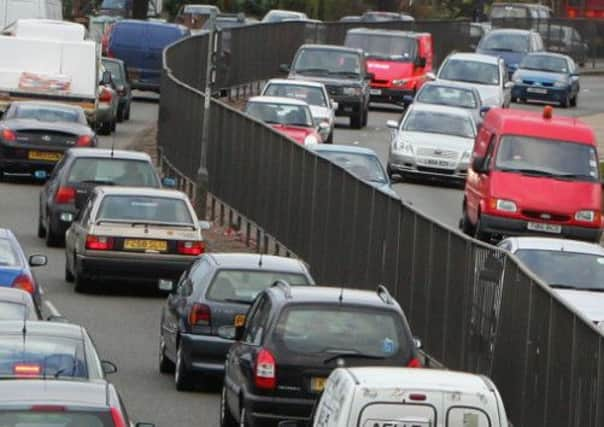Leaders: Drive for new road tax a welcome diversion


It failed to discriminate between rich and poor and made all from the millionaire to the state pension-reliant widow pay the same for local government services. The property-based council tax, which replaced the poll tax, does at least make the wealthier pay a bit more. So why aren’t the same principles applied to road taxes?
Reform Scotland, a think-tank, argues that the same unfairness, albeit in a slightly different way, applies to use of the roads and the taxes paid by road users. The same rates of vehicle excise duty are charged regardless of how much use people make of roads. And people who live in remote rural areas have to pay more through fuel duties to go shopping or to hospital simply because they have to drive greater distances.
Advertisement
Hide AdAdvertisement
Hide AdThe solution, it argues, would be to make users pay for their road use, taking into account not simply distance, but other factors such as the degree of congestion. In a nice soundbite, it calls this a “pay-as-you-drive” scheme. The more miles someone drives, and the more heavily used are the routes travelled, then the more someone would pay.
It all sounds perfectly logical. Motorways and trunk roads could all be fitted with detection systems and vehicles could be equipped with what in effect would be mileage meters clocking up the tax bills that a driver would have to pay. Such road toll systems now operate in some European countries.
Logicality, however, does not always assist political implementation. The present Scottish Government has spent a lot of money getting rid of tolls on the Forth and Tay bridges to popular acclaim: why would it risk unpopularity by bringing them back? One answer might be that the bridge tolls were unfair as they weighed particularly heavily on the people of Fife, especially those who had to pay them regularly for work purposes. This nation-wide proposal would, instead, make everyone pay.
The fairness to be gained from abolishing two taxes and replacing them with a user-charging system does not, however, guarantee that the plan would be popular. Since there are few road users in rural areas, and many in more congested urban areas, it seems probable that there will be more losers than gainers from road tolls.
The big problem is political – in that the UK government would have to agree to hand over vehicle excise and fuel duties to the Scottish Government for the plan to be implemented. And systems to prevent cross-border fuel shopping or indeed smuggling might have to be devised.
Nevertheless, the current system is crude and affords governments too much cover in order to evade such questions as fairness. The technology for a more sophisticated road tax system exists. It’s time to think of driving in a new direction.
Forth bridge a 50th birthday treat
Commuters who endure the queues to cross the Forth Road Bridge on a daily basis may well regard the prices to be charged next summer for a one-off chance to scale the full height of the structure as a luxury they cannot face never mind afford.
But despite the top-of-the-range tickets to view the Forth and its road bridge from top to bottom being a bit what you might call steep, more akin as they are to the cost of a Wimbledon finals seat, they could well prove to be a sell-out.
Advertisement
Hide AdAdvertisement
Hide AdThe occasion is the 50th anniversary of the road bridge’s opening. And while most regard crossing it as a necessary evil, especially at peak hours, it should not be forgotten that at the time of its erection it was an engineering marvel, its slim grace a construction yin to the rail bridge’s yang of chunky solidity.
The two structures are a standing spectacle which already draws visitors from far and near. The third crossing will make the strait between North and South Queensferry a permanent celebration of more than a century’s worth of Scottish design and
engineering excellence.
All right, we are ignoring the fact that the need for the new crossing has been dictated by flaws in the first road bridge. But recent tests suggests that these problems are not as great as first thought, and the lightening of its load by the new crossing should ensure it will still have a long life.
As a country which earned a world-wide reputation from engineering, it is arguable that Scotland spends more time on fruitlessly mourning that which has disappeared than that which remains and still serves its purpose. Next year’s celebrations should go some way to rectifying that.